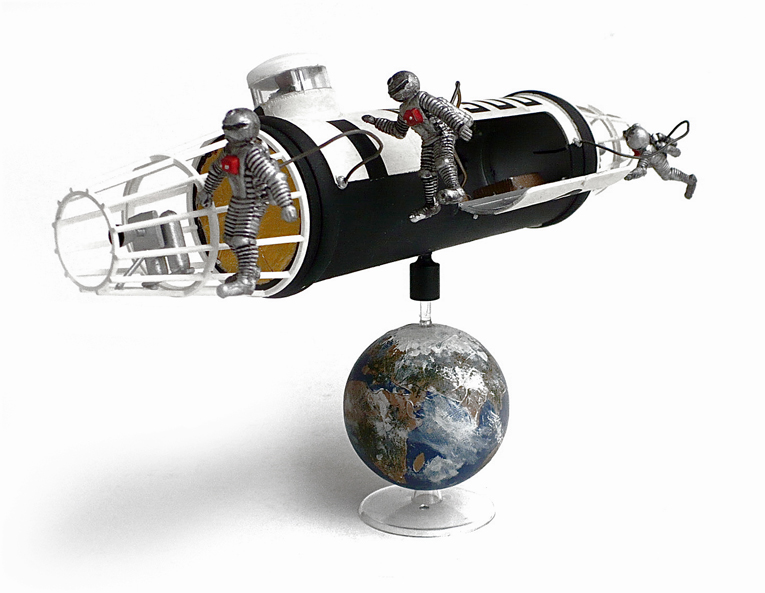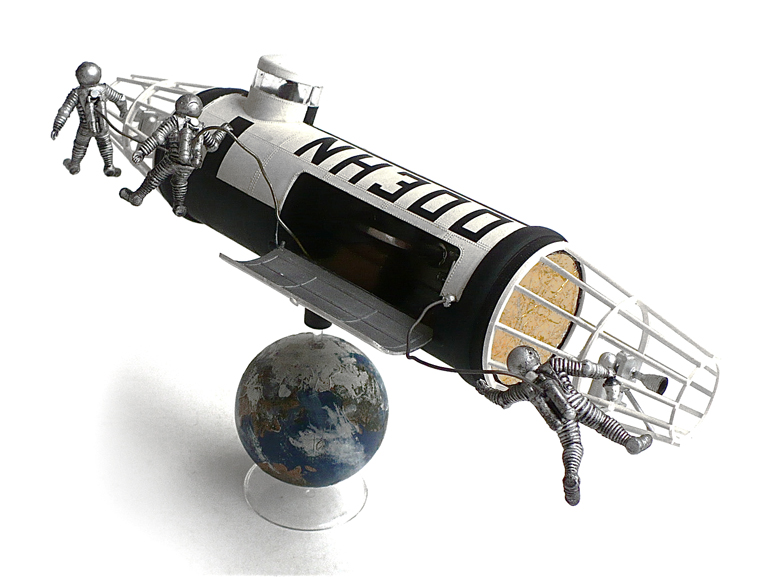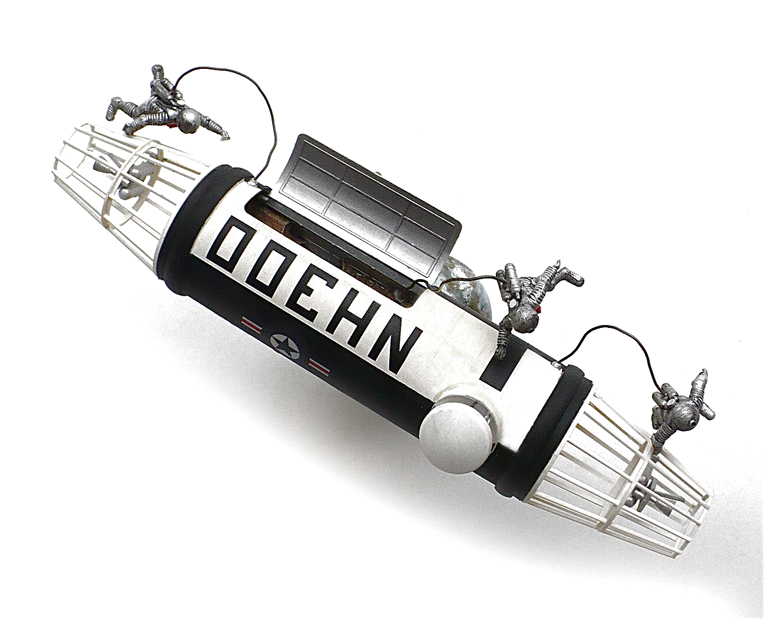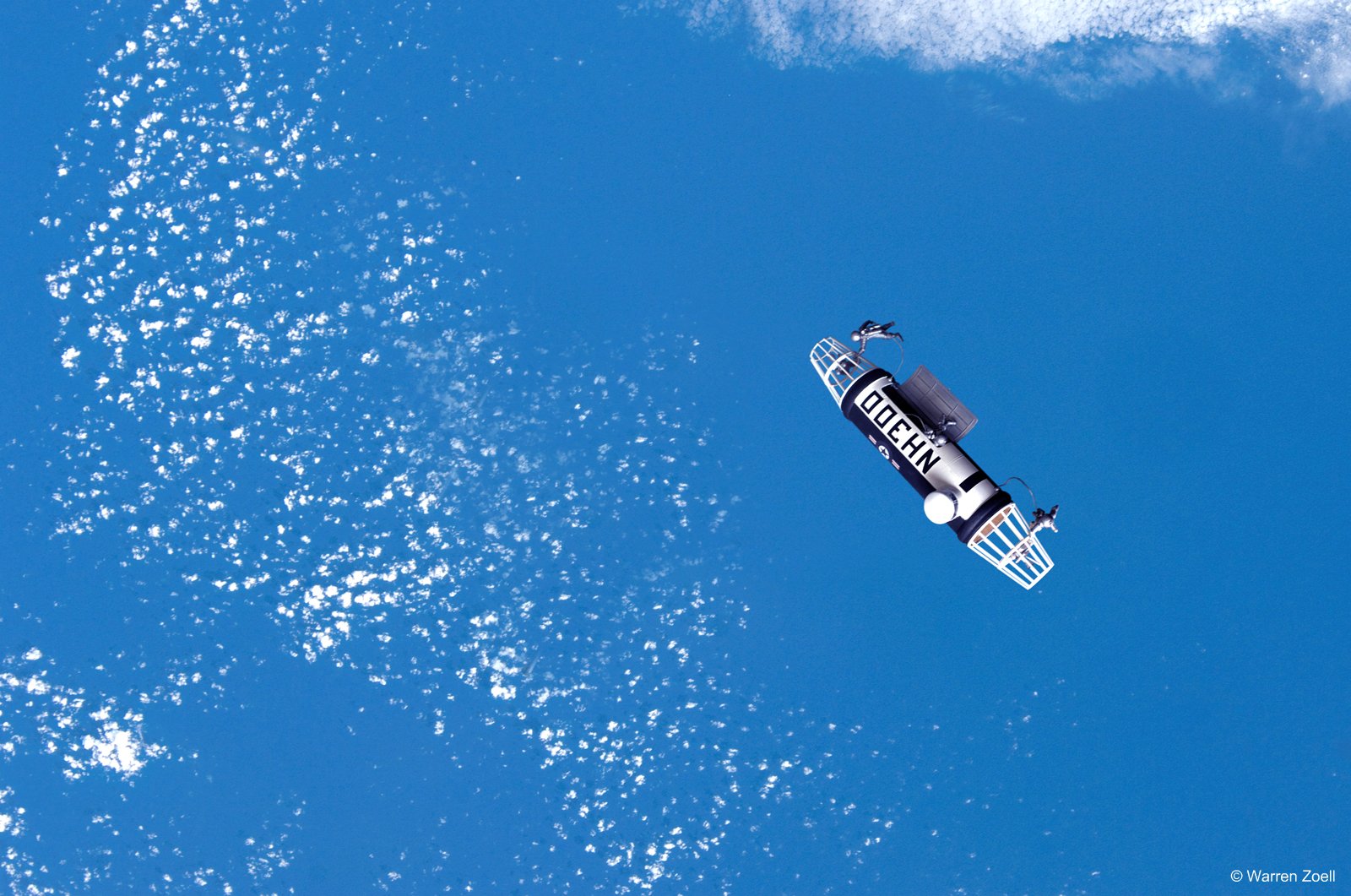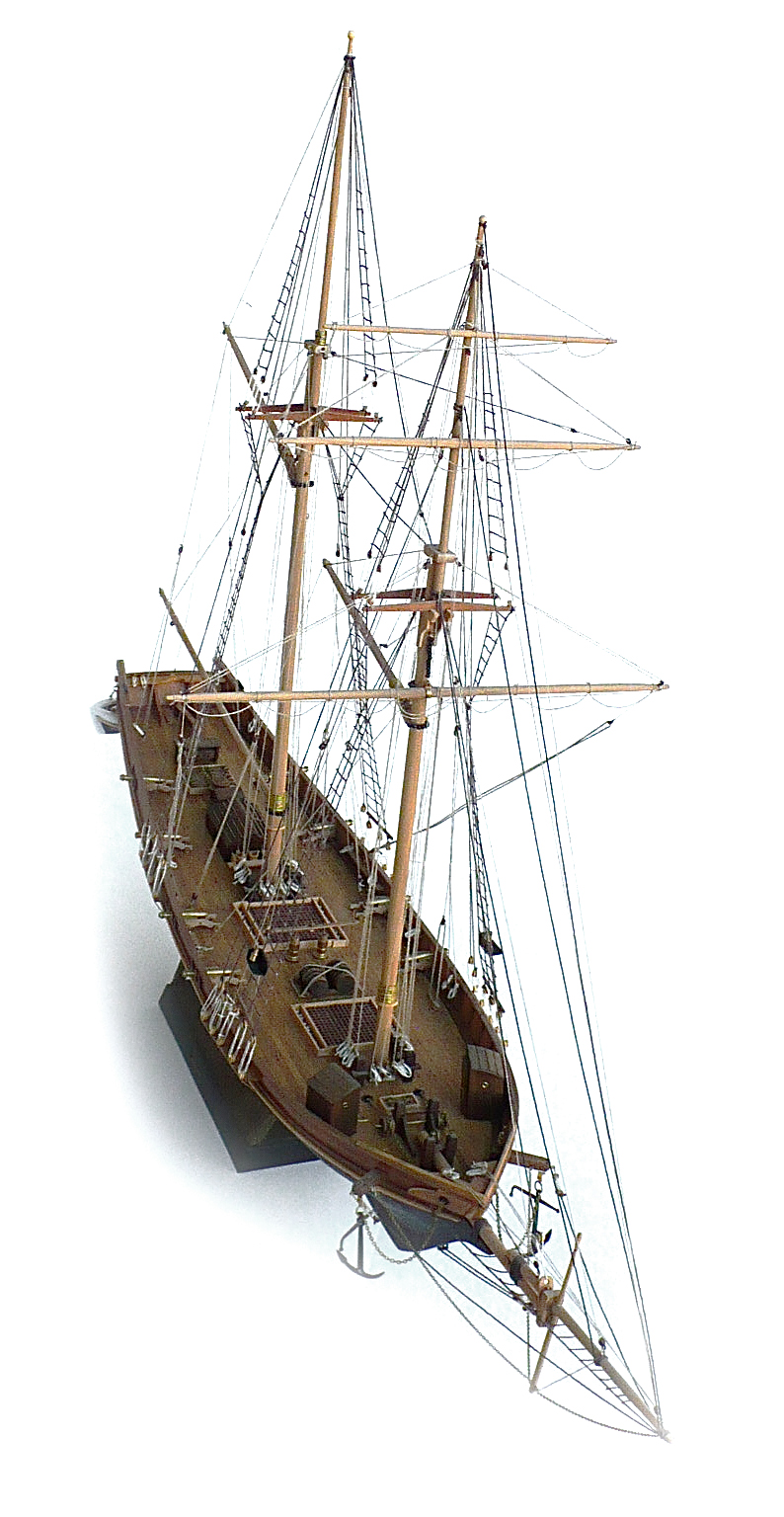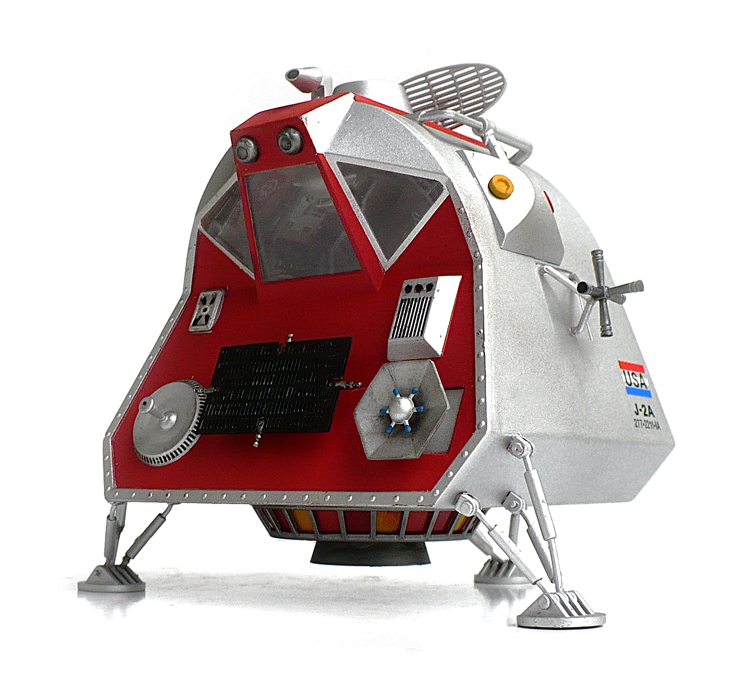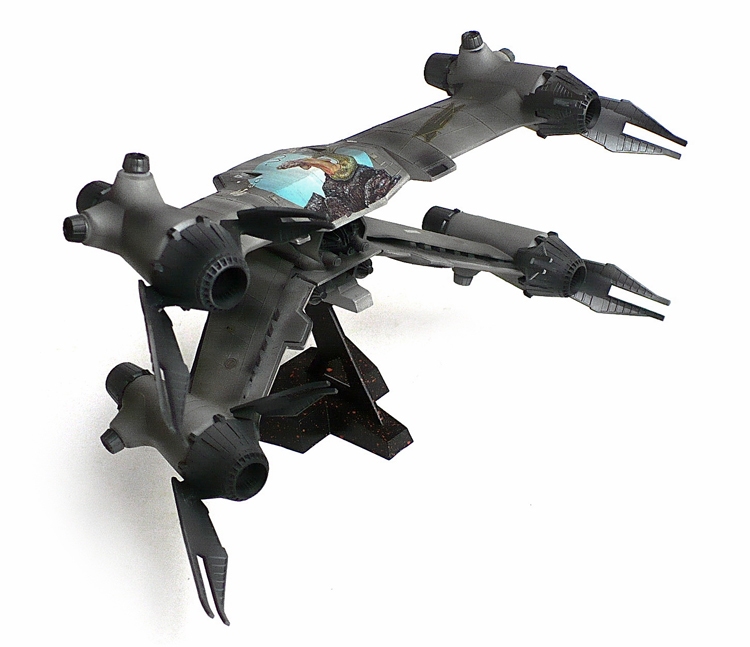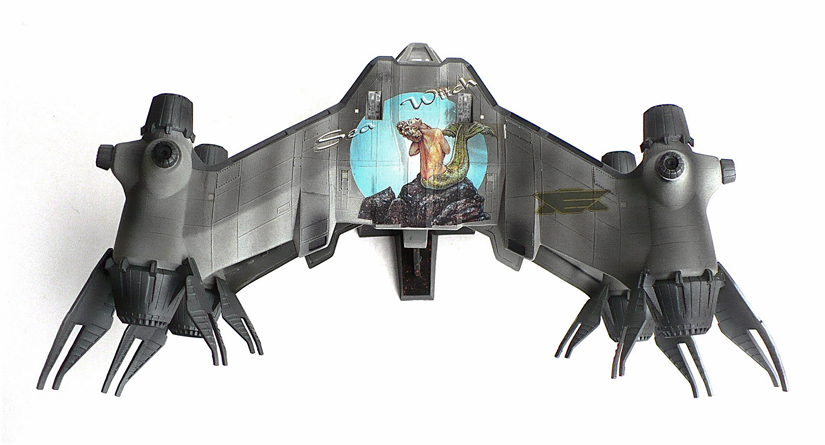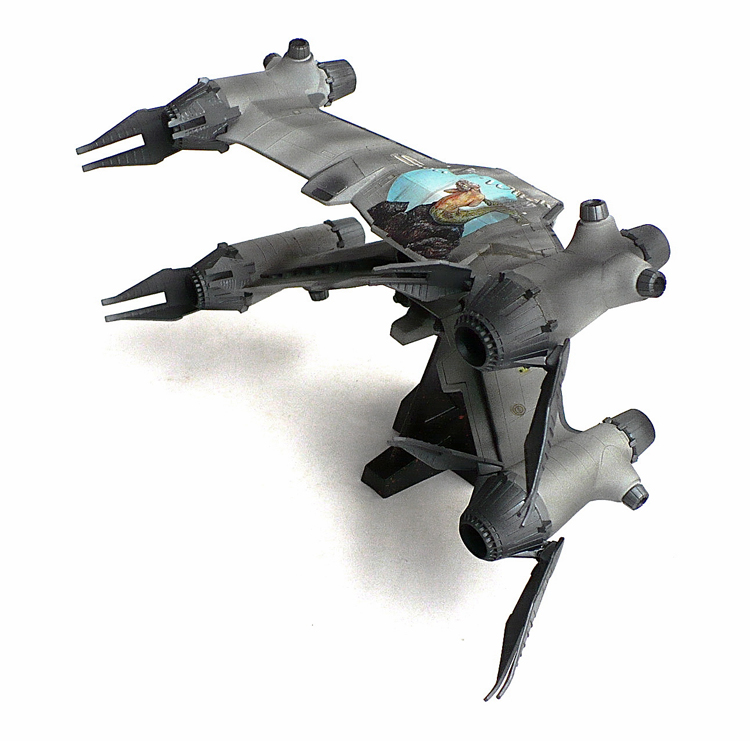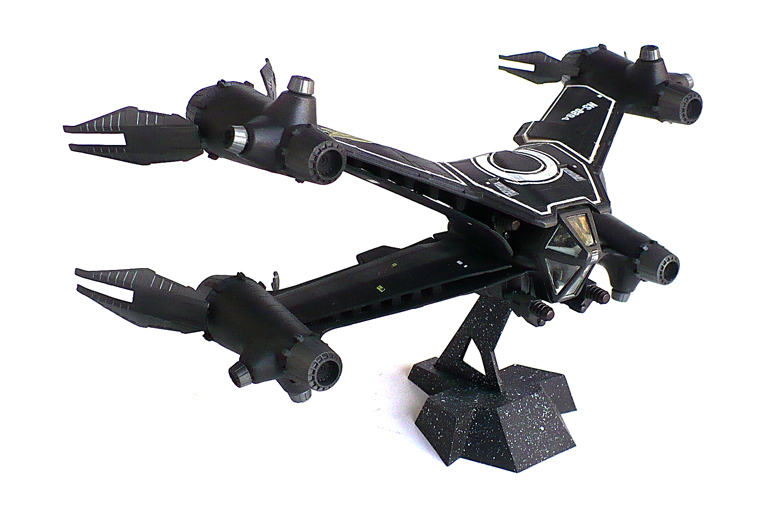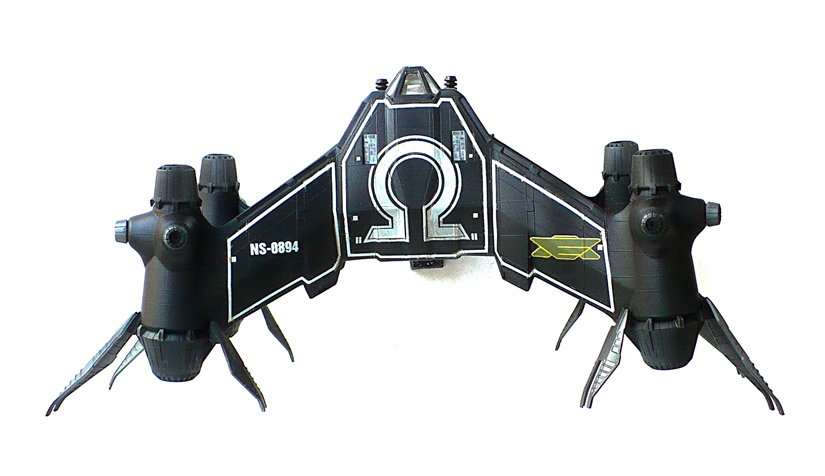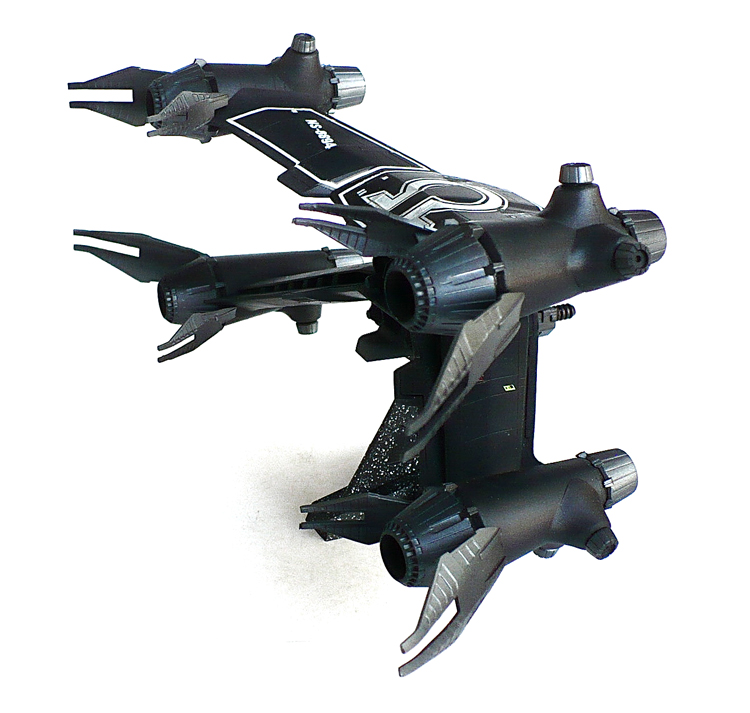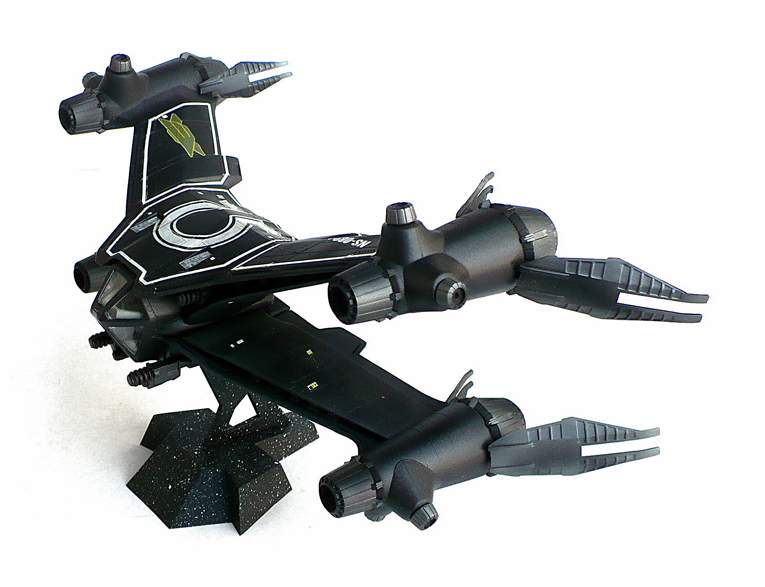Here are some images plus a couple of composites of Lindberg's 1/200 scale U.S.S. Explorer.
Here is another kit that was originally issued in the late 1950's only then it was known as the "Multi Staged Transport Rocket".
This
is another kit that was of coarse based heavily on Werner Von Braun's
design to which of coarse inevitably became the Apollo Staturn 5 rocket.
Translate
Monday, October 27, 2014
Saturday, October 25, 2014
Willy Ley Concept Space Taxi
Here are some images of Monograms 1/48 scale Willy Ley concept Space Taxi.
From Fantastic Plastic" Another classic Willy Ley design, the "Space Taxi" or "Space Buggy" is, in the description found on the 1969's re-release box, an "Intraspace cargo/passenger carrier designed to move men and material between space cargo ships and manned space stations." Its clunky, purely functional design is typical of the brass-tacks engineering aesthetic that characterized conceptual spacecraft during the second half of the 1950's.Despite its non-aerodynamic shape, the "Space Taxi" proved to be popular enough to warrant multiple re-releases following its 1959 debut. In 1969 it was released with chrome-plated astronauts and machinery cages and it was released again in 1996 along with the "Passenger Rocket" as part of Revell/Monogram's "Selected Subjects Program." From Wikipedia" Willy Ley (October 2, 1906 - June 24, 1969) was a German-American science writer and space advocate who helped popularize rocketry and spaceflight in both Germany and the United States. The crater Ley on the far side of the Moon is named in his honor.
From Fantastic Plastic" Another classic Willy Ley design, the "Space Taxi" or "Space Buggy" is, in the description found on the 1969's re-release box, an "Intraspace cargo/passenger carrier designed to move men and material between space cargo ships and manned space stations." Its clunky, purely functional design is typical of the brass-tacks engineering aesthetic that characterized conceptual spacecraft during the second half of the 1950's.Despite its non-aerodynamic shape, the "Space Taxi" proved to be popular enough to warrant multiple re-releases following its 1959 debut. In 1969 it was released with chrome-plated astronauts and machinery cages and it was released again in 1996 along with the "Passenger Rocket" as part of Revell/Monogram's "Selected Subjects Program." From Wikipedia" Willy Ley (October 2, 1906 - June 24, 1969) was a German-American science writer and space advocate who helped popularize rocketry and spaceflight in both Germany and the United States. The crater Ley on the far side of the Moon is named in his honor.
Friday, October 24, 2014
Baltimore Clipper Harvey
Here are some images of Artesania Latinas 1/50 scale Baltimore Clipper
Harvey. In the early 19th century these fast sailing vessels were used
by the United States to carry everything from cargo to passengers to yes
even slaves. These Baltimore clippers really came into their own
however when California was incorporated into the American union in
1848. Back in those days there was no Panama canal and no railroad so
the only way to supply the western side of the union was with these
ships and the only way to get there was around the Horn of South
America. The fierce storms around the Horn demanded the ability to trim,
furl and unfurl sails quickly and ships like the Harvey fit the bill.
Baltimore clippers could go from New York to California in as fast as 90
days. It was because of ships like the Harvey that cities like San
Fransisco were able to triple their populations in as little as 10
years. Of coarse the days of these ships were numbered with the advent
of the railroad and the Panama and Suez canals and by the end of the
1870s these ships were no longer considered economically viable.
Wednesday, October 22, 2014
Space Pod from Lost in Space
Here are some images of Moebius Models 1/24 scale Space Pod from Lost in Space. From Wikipedia "
Lost in Space is a science fiction TV series created and produced by Irwin Allen, filmed by 20th Century Fox Television,
and broadcast on CBS. The show ran for three seasons, with 83 episodes
airing between September 15, 1965, and March 6, 1968. Their first TV
season was filmed in black and white, but the rest of them were filmed
in color. In 1998, a Lost in Space movie, based on the TV series, was released. The TV series focused primarily on Jonathan Harris
as Dr. Zachary Smith, originally an utterly evil would-be killer who
as the first season progressed became a sympathetic anti-hero,
providing comic relief to the TV show (and causing most of its
problems).
The "Pod" – a small spacecraft first shown in the third and final season and modeled on the Apollo Lunar Module — was used to travel from its bay in the Jupiter 2 to destinations either on land or in space. The Pod apparently had artificial gravity too.
Starfury Sea Witch
Here are some images of Revell's 1'72 scale Starfury Sea Witch from Babylon 5. From Wikipedia "
The Starfury fighter is a fictional vessel used by Earthforce, the military branch of the Earth Alliance, in the science fiction television series Babylon 5. The CGI model was first seen in the opening episode of the first season, "Midnight On The Firing Line" which first aired in the United States in January 1994, and has essentially appeared in every episode thereafter.
It also appears in the later, and short lived, Crusade television series, the special edition (not original) version of the pilot movie, The Gathering, the TV movies In the Beginning, Thirdspace, The River of Souls and A Call to Arms, as well as the The Lost Tales (the first in an anthology series which was to be released on DVD but was aborted due to funding issues). Plus a number of written short stories and novels based in the same fictional universe.
Starfury Omega
Here are some images plus a composite of Revells 1/72 scale Starfury Omega from Babylon 5. From Wikipedia "
Designed once Warner Brothers gave the green light for the television series, the initial design of the Starfury
was a collaboration between Steve Burg (a freelance designer on the
show) who created a number of possible concepts and Ron Thornton
(co-founder of Foundation Imagining) who refined and detailed the Lightwave models. This refining of the potential and final designs was necessary to keep the polygon count as small as possible due to the limited processing power (and memory) of the Amiga computers which were initially used for rendering animation sequences, as large numbers of the vessels would appear in various episodes. Located at the end of each of the four struts or wings,
though it is not capable of flying in atmospheres, are two large
thrusters, one facing forward and one back. Attached to the housing
assembly for these are two additional smaller attitude control
thrusters. While creating the design it was envisaged that the engines
would work in a similar way to those of the Harrier,
in that the output could be sent to any one of the four nozzles. The
smaller manoeuvring ones having about 15 to 20% of the thrust of the
larger Because of the positioning of these 16 thrusters and the use of
computer animation, as opposed to using miniatures and more established animation techniques such as motion control, the Starfury was able to be depicted as an incredibly agile fighter.
Unknown to the producers of the show at the time, it was an intentional homage to, what Thornton and Burg felt was, the excellent and under utilised design ideas seen in the Gunstar from the 1984 movie, The Last Starfighter, which was created by their close friend Ron Cobb.
The design was also ideal for demonstrating to the executive producers
of the show an idea which Ron Thornton wished to introduce. Namely,
the closer adherence to real physics with regards to how human (not
alien) vessels would manoeuvre in space, and that it could be depicted
in an interesting and exciting way. One example of how he demonstrated
this can be found in the season one episode "Soul Hunter". Before deploying its grappling claw a Starfury
pilot carries out a complex set of subtle manoeuvres, with careful
attention being made to the firing of the thrusters, to match the
rotation of a damaged alien vessel tumbling towards the Babylon 5 space station.
Described as a stealth version of the Starfury by executive producer J. Michael Straczynski, the Black Omega fighters, attached to Psi Corps, first appeared in the season one episode, "Mind War", which was originally aired in the United States in March 1994.
This is a minor variant of the Lightwave computer model as the main differences from the original revolve around the texture map
being used. For example, the nozzle heads on the front and rear of the
main thrusters appear dark and smooth. On others such as the heavy
fighter they appear striated.
In fact, they too are also smooth. To create the impression of model
detailing, Thornton would use a palette of only 128 colours to draw
surface details, such as paneling, onto the texture map rather than build it. Lightwave would then dither the maps, and with the rendering software they looked as good as 24 bit colour images. This is one of the techniques that Foundation Imagining used to keep things like the polygon count to a minimum in order to produce the ground breaking animations with the limited amount of RAM that the Amiga Computers held".
Tuesday, October 21, 2014
Klingon D7 Battlecruiser
Here are some images of Polar lights 1/1000 scale Klingon D7 Battlecruiser from "Star Trek The Original series".
From Memory Beta"
The D7 class battle cruiser was a type of warship designed and built by the Klingon Empire during the mid 23rd century. Many also entered the service of the Romulan Star Empire following the formation of a Klingon-Romulan alliance in the 2260s. (TOS episodes: "Elaan of Troyius", "The Enterprise Incident", "Day of the Dove") .
From Memory Beta"
The D7-class was the next step in Klingon battle cruiser design, its form being a development of the earlier D4 class. The first prototypes entered service as early as 2151 (ENT episode: "Unexpected")
By the mid 23rd century the class had become the mainstay of the fleet. Following the formation of a Klingon-Romulan alliance in the 2260s, many D7s entered service in the Romulan Star Empire as Stormbird-class cruisers. (TOS episode: "The Enterprise IncidentHere are some images of Polar Lights 1/1000 scale Klingon D& class Battlecruiser.From Memory Beta"
The D7 class battle cruiser was a type of warship designed and built by the Klingon Empire during the mid 23rd century. Many also entered the service of the Romulan Star Empire following the formation of a Klingon-Romulan alliance in the 2260s. (TOS episodes: "Elaan of Troyius", "The Enterprise Incident", "Day of the Dove") .
Romulan D7 Battlecruiser
Here are some images of Polar Light's 1/1000 scale Romulan D7 Battlecruiser from "Star Trek The Animated Series".
From Wikipedia"
In the original series, at least three starships of the Klingon D-7 class were used by the Romulans. (This came to pass when a fire at NBC's studio warehouse destroyed the only existing Romulan ship model (the 2260s Bird of Prey), necessitating re-use of the surviving Klingon props.) Novels (as well as fans) have speculated that these vessels were given to the Romulans during a brief alliance with the Klingon Empire against the Federation (in exchange for which, the Romulans provided the Klingons with cloaking technology), though this is non-canon and has never been confirmed onscreen. The Romulans refitted the D-7s in their service with cloaking devices and the Federation occasionally referred to Romulan controlled vessels of this class as "battlecruisers."
From Wikipedia"
In the original series, at least three starships of the Klingon D-7 class were used by the Romulans. (This came to pass when a fire at NBC's studio warehouse destroyed the only existing Romulan ship model (the 2260s Bird of Prey), necessitating re-use of the surviving Klingon props.) Novels (as well as fans) have speculated that these vessels were given to the Romulans during a brief alliance with the Klingon Empire against the Federation (in exchange for which, the Romulans provided the Klingons with cloaking technology), though this is non-canon and has never been confirmed onscreen. The Romulans refitted the D-7s in their service with cloaking devices and the Federation occasionally referred to Romulan controlled vessels of this class as "battlecruisers."
Monday, October 20, 2014
Subaru R-2
From Wikipedia"
The Subaru R-2 was a kei car manufactured by Subaru from 1969 to 1972. The R-2 was a full model change of the popular Subaru 360, but with an updated appearance and increased interior space. The R-2 appeared approximately one year before the Honda Life, Daihatsu Fellow Max and Suzuki Fronte kei cars, however, it continued to use the powertrain setup from the Subaru 360, which was the EK33 air-cooled 2-cylinder engine installed in the back, which is the inspiration for the name of the vehicle. It appeared around the same time as the second generation Mitsubishi Minica.
When the car was introduced February 8, 1969, Subaru took 25,000 orders for the car in one month.
In the early 1970s, the Japanese government enacted legislation to reduce emissions, which prompted Subaru and other manufacturers to upgrade engines that were air-cooled and using a two-stroke engine implementation. On October 7, 1971, the Subaru engine was upgraded to a two-stroke water-cooled engine, called the EK34 series engine, but the retrofit was hastily done, and was better achieved with the new 1972 Subaru Rex, which was available with both 2- and 4-doors. A styling upgrade was accomplished on the water-cooled R-2, adding a faux grille to the front of the vehicle that had no function other than a more modern appearance, as well as a corporate identity to the all new compact Subaru Leone.
Subaru continued with a rear engine platform so as to afford more trunk space up front and provide seating for four passengers, whereas competitors offered front engine front wheel drive vehicles to reduce noise intrusion from the engine and offer rear seats that folded down for increased cargo capacity, albeit with fewer passengers. In response to the rising popularity of front wheel drive front engine alternatives, Subaru offered a hatchback bodystyle February 16, 1970.
Performance versions of the R-2 came April 18, 1970, in the form of the R-2 SS with a dual exhaust and an increase in the compression ratio from 3.8 kg·m (37 N·m; 27 lb·ft)at 6,400 RPM to 7.5 kg·m (74 N·m; 54 lb·ft)at 7,000 RPM, and a higher trim level called the R-2 GL October 5. Another contributor to the early cancellation of the R-2 was its handling characteristics, which were found to be not as stable as vehicles that were front engine, front wheel drive.
Subscribe to:
Posts (Atom)








